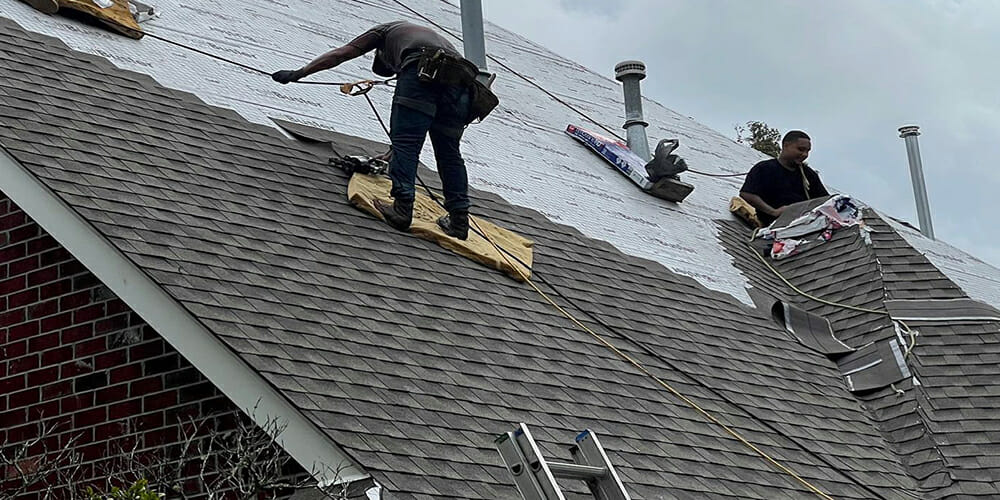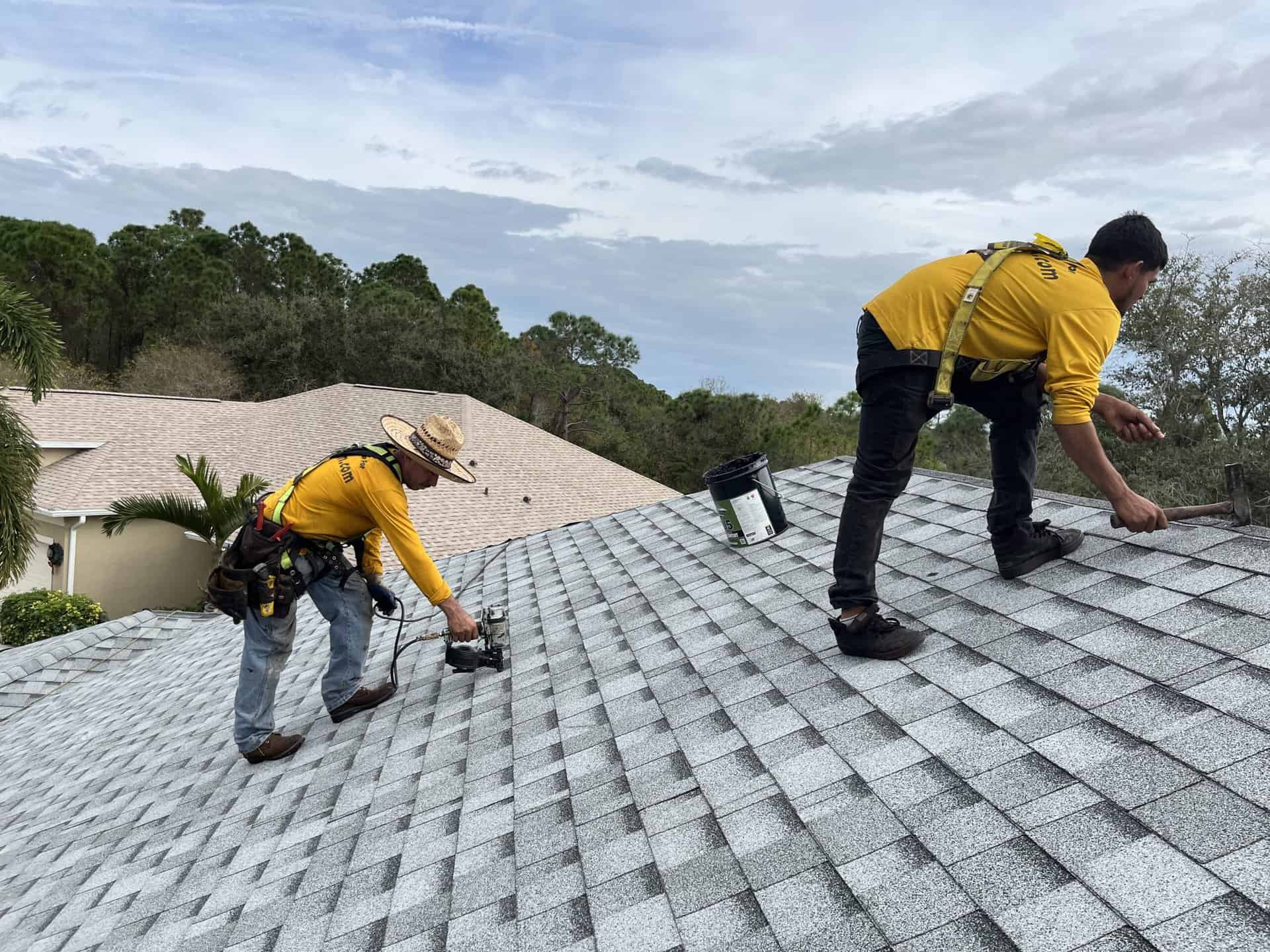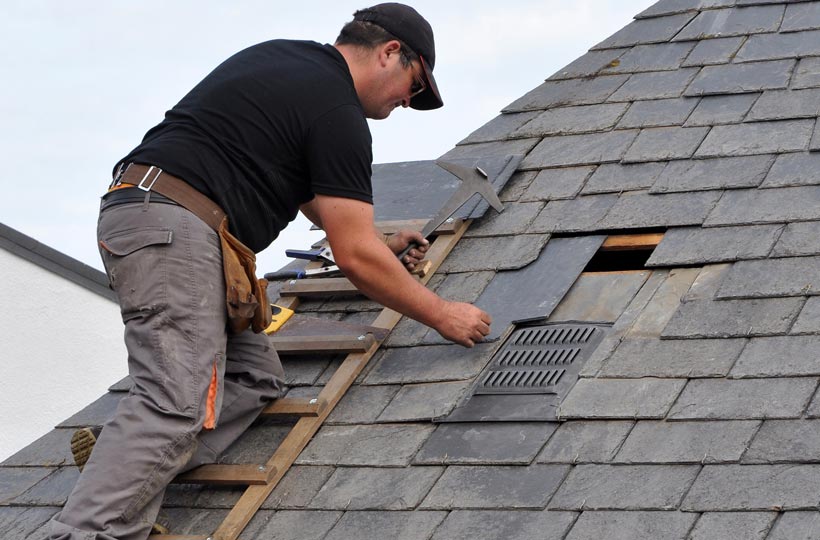Preventative Roof Upkeep: Tips to Avoid Pricey Fixings
To prevent pricey fixings, you ought to inspect your roof routinely for missing out on or harmed tiles, tidy your downspouts and gutters to protect against blockages, and trim looming branches. These straightforward steps can substantially extend your roof covering's life-span, and there's plenty extra you can do to safeguard your financial investment.
Check Your Roof Covering Frequently
When you evaluate your roofing system frequently, you can catch possible problems prior to they become pricey repair work. Begin by checking for missing, split, or crinkling tiles; these are indicators that your roof covering may need interest.
After a tornado, it's necessary to evaluate your roof for damages triggered by high winds or heavy debris. Don't fail to remember to evaluate the underside of your roofing system in the attic room; seek indicators of wetness or mold, which can indicate leakages. You should additionally watch out for granules in your seamless gutters, as they can indicate tile degeneration. By taking these actions, you'll prolong your roof's lifespan and conserve yourself from unanticipated expenses. Routine inspections are crucial to preserving a healthy and balanced roof.
Clean Rain Gutters and Downspouts
Routine roof evaluations normally result in a crucial job: cleaning your seamless gutters and downspouts. Clogged gutters can create water to support, causing possible roof leaks and architectural damages. To stop these problems, make it a behavior to check your seamless gutters at least two times a year, specifically after heavy storms or fall when leaves gather.
Do not neglect to inspect downspouts for blockages. If water isn't moving freely, you may require to make use of a plumbing's serpent or a hose to remove the obstruction.
Address Overhanging Branches
Looming branches can present a significant hazard to your roof, so it's important to cut them routinely. Not just can they cause damages throughout storms, but they can likewise invite pests. Make it a practice to inspect for any type of indications of wear or damages to maintain your roofing in leading shape.
Trim On A Regular Basis
One of the most vital actions in roofing system upkeep is to cut those branches that hang too close to your home. On a regular basis reducing back these branches maintains your roof covering clear and minimizes the danger of bugs and leakages. You don't need to tackle this task alone; working with a professional arborist can guarantee reliable and safe trimming, securing your roof and boosting your home's general appearance.
Examine for Damages
 roof repair
roof repair
Check for Harmed or Missing Out On Roof Shingles
It's important to inspect your roof shingles regularly for any type of damages or missing out on items. If you identify any type of problems, replace missing out on roof shingles promptly to stop further issues. Keep an eye on exactly how the weather influences your roofing, as harsh problems can lead to tear and use.
Examine Routinely for Damage
Frequently inspecting your roof covering for damages is crucial to keeping its integrity and extending its life expectancy. Check your roofing system after solid winds or hefty storms, as these problems can displace or harm tiles. By making roof evaluations a normal component of your upkeep regimen, you can capture issues early and save yourself from costly fixings down the line.
Change Missing Out On Shingles Quickly
After looking for any damages during your assessments, you might find that some tiles are missing or jeopardized. Do not wait to replace them; punctual action can stop further concerns. Missing out on shingles reveal your roof covering to wetness, which can bring about leaks and even more considerable damages with time.
When you discover a missing out on shingle, evaluate the bordering shingles for any kind of that are fractured or curling, as these may require changing too. Ensure to use shingles that match your roof covering's shade and style for a smooth look. If you're unclear concerning doing it on your own, don't be reluctant to call a professional. Maintaining your roofing in top form is essential for shielding your home and avoiding costly repair work down the line.
Monitor Weather Impact Regularly
As storms roll via your location, maintaining a close eye on your roofing comes to be vital. After each tornado, take a minute to examine your roofing system for any type of harmed or missing out on roof shingles. Search for granules in your seamless gutters, which can suggest damage. If you identify any type of shingles that are fractured, curled, or completely gone, address the concern instantly to prevent water leaks and additional damage. Climbing up onto the roofing system isn't constantly required; you can usually find problems from the ground with field glasses. Don't fail to remember to look for debris accumulation, as it can catch wetness and lead to rot. Regular monitoring helps you capture tiny problems before they rise, saving you time and cash in the future.
 roof repair
roof repairMake Sure Correct Air Flow
While many house owners concentrate on the exterior and structural aspects of their roofs, assuring correct air flow is necessary for preserving its durability and efficiency. Poor air flow can lead to heat accumulation and moisture buildup, which can trigger damage over time.
Inspect your vents routinely to ensure they're not blocked by insulation or debris. If you notice any type of signs of mold and mildew or mildew, it can show poor air flow. Furthermore, consider using a powered ventilator if your home fights with air flow. Appropriate ventilation not just boosts your roofing's lifespan but also enhances energy efficiency, maintaining your home comfortable year-round. By taking these actions, you're purchasing your roof covering's wellness and preventing expensive repairs down the line.
Look for Indications of Leakages
Correct air flow assists protect against dampness buildup, however despite having good air movement, it is necessary to keep an eye out for indicators of leakages. Begin by examining your ceilings continue reading and walls for water spots or discoloration, which can suggest a leak above. Don't fail to remember to examine your attic for damp spots, mold and mildew, or mildew, as these can be very early caution indications. Search for peeling paint or gurgling wallpaper, as well; these usually signal wetness intrusion.
Outdoors, analyze your roofing system for missing out on shingles, splits, or harmed blinking, as these susceptabilities can cause leakages. Pay focus to locations around skylights, vents, and chimneys, where leaks commonly happen. If you observe any kind of indicators, act swiftly to resolve them prior to they worsen. Remember, capturing leakages early can conserve you from expensive repair work later on. Consistently looking for these indications will help keep your roof's honesty and maintain your home secure and dry.
Arrange Specialist Evaluations
 roof repair
roof repair
Objective for at the very least one assessment per year, preferably in the springtime or fall, to straighten with seasonal changes. Throughout these inspections, specialists can determine potential risks like missing out on tiles, compromised flashing, or indications of mold. They'll likewise look for debris accumulation that can result in water merging.
Don't wait for visible signs of trouble; taking proactive actions can prolong your roof covering's lifespan. Purchasing routine assessments not only safeguards your home but likewise offers you satisfaction understanding your roof covering is in good condition.
Frequently Asked Inquiries
How Usually Should I Do Roof Covering Inspections?
You need to perform roofing evaluations at least two times a year, ideally in springtime and loss. Regular checks help you detect potential concerns early, conserving you time and money on pricey repair services down the line.
What Tools Do I Need for Roof Covering Maintenance?
For roofing upkeep, you'll require a strong ladder, harness, roof covering nails, a hammer, an utility blade, caulk, a trowel, and a flashlight. Do not neglect handwear covers and safety and security goggles to maintain on your own shielded!
Can I Tidy My Roof Myself?
Yes, you can clean your roofing system yourself. Simply ensure you have the right tools, put on safety and security equipment, and adhere to appropriate methods. It is very important to be cautious to stay clear of accidents and guarantee effective cleansing.
Just How Can I Recognize Roofing System Leakages Early?
To determine roof leakages early, you'll want to check your roofing consistently. Try to find water stains, mold and mildew, or missing tiles. Listen after heavy rain, and do not hesitate to inspect the attic for moist places.
What Are the Indications I Required a New Roof?
If you see curled or missing roof shingles, relentless leaks, or water stains on ceilings,You'll need a new roofing. Additionally, if your roofing system's age exceeds two decades, it's smart to consider replacement quicker as opposed to later on.
To stay clear of expensive fixings, you need to inspect your roof consistently for missing or damaged shingles, clean your seamless gutters and downspouts to stop blockages, and trim overhanging branches. Missing out on roof shingles expose your roofing system to dampness, which can lead to leaks and even more substantial damages over time.
After each tornado, take a moment to inspect your roof covering for any damaged or missing shingles.Outside, examine your roof for missing tiles, fractures, or damaged blinking, as these susceptabilities can lead to leaks.To recognize roofing leaks early, you'll want to check your roofing system routinely.